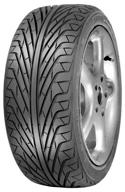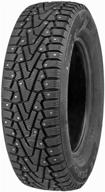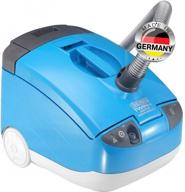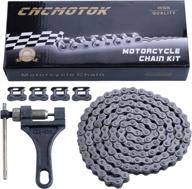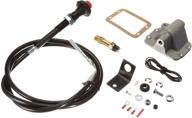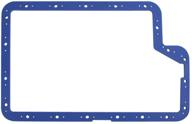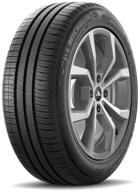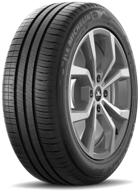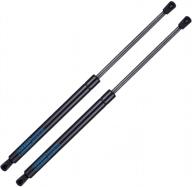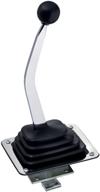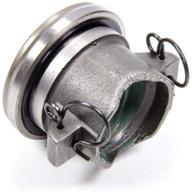Choosing the Right Clutch for Your Vehicle
The clutch is a crucial component in the drive train system. It connects the engine to the transmission and allows you to smoothly shift gears. Choosing the wrong clutch can lead to premature wear, gear grinding, and poor acceleration. Here's what you need to know about picking the optimal clutch for your vehicle:
Clutch Types
- Organic - Made of organic materials like cotton and rubber. Designed for normal street driving.
- Ceramic - Made of ceramic materials which can withstand more heat. Good for frequent and aggressive driving.
- Centerforce Dual-Friction - Combination of organic and ceramic materials. Provides smooth engagement and added holding capacity.
Factors to Consider
Here are key factors to take into account when selecting a clutch:
- Vehicle make and model - The clutch must be compatible with your vehicle.
- Engine power - More powerful engines need a higher torque capacity clutch.
- Usage - How aggressively you drive determines the material suited for clutch longevity.
- Racing - Use a high performance clutch designed for hard launches and frequent gear changes.
Clutch Life
Clutch life depends on proper driving techniques and maintenance. Here are some tips:
- Don't ride the clutch pedal as this can lead to premature wear.
- Rev-match when downshifting to reduce driveline shock.
- Check clutch fluid levels regularly.
- Install a new clutch if slipping, gears grind, or acceleration is poor.
Replacement Costs
Clutch replacement costs vary based on:
| Factor | Cost |
|---|---|
| Clutch kit | $100 - $500 |
| Labor | $400 - $800 |
| Flywheel resurfacing | $100 - $200 |
Shop around for reputable mechanics to get the best labor rates. Using quality parts can minimize the need for frequent replacements.
In Summary
Choosing the optimal clutch involves factoring in your vehicle, driving style, and budget. Research compatible components, drive gently, and maintain the system to maximize clutch life. With the right clutch, your vehicle will deliver seamless gear changes and acceleration for miles to come.
Manual vs. Automatic Transmissions: Pros and Cons
When purchasing a new car, one key decision is whether you want a manual or automatic transmission. Both have their advantages and disadvantages that should be considered carefully based on your driving needs.
Manual Transmission Pros
- Better fuel economy - Manuals typically achieve 5-15% better fuel efficiency since they have more gears and the driver can control gear changes.
- Improved performance - The driver can pick the most optimal gear for acceleration which allows faster speed gain.
- Enhanced driver control - With clutch and gear shift control, the driver can maneuver the car more precisely. This is useful in snow, mud or hills.
- Lower maintenance costs - Manuals have fewer fluids to change and a less complex design meaning lower repair bills.
Manual Transmission Cons
- Learning curve - It takes practice to smoothly operate the clutch, gas pedal, and shifter.
- Less convenience - Constant gear shifting can be tiring in stop-and-go traffic.
- Possibility of wear - Improper shifting techniques such as "riding the clutch" can lead to expensive repairs.
- Resale value - Manual cars are less desirable to many buyers, especially in the US, so they can be harder to sell.
Similar products
Automatic Transmission Pros
- Ease of use - No need to shift gears makes driving simple and convenient.
- Works better in traffic - Automatically changes gears in congested driving conditions.
- Appeal for resale - Most buyers prefer automatics so they have a higher resale value.
- Improved technology - Modern automatics have more gears to optimize efficiency and performance.
Automatic Transmission Cons
- Reduced fuel economy - Auto gear shifting is less efficient leading to 10-15% lower mpg.
- Higher maintenance costs - More fluids to change and a complex design means pricier repairs.
- Less driver control - The computer dictates gear changes rather than the driver.
- Lower towing capacity - Automatics have torque converter slippage so can't haul as much.
Real World Examples
The 2021 Toyota Corolla gets 32 mpg city/41 highway with the manual transmission. The automatic version is rated at 31/40 mpg. Over 15,000 miles of mixed driving, that can add up to $75 in fuel savings with the manual. However the convenience of an automatic can be worthwhile for some drivers despite the slight reduction in fuel economy.
As for maintenance, a clutch replacement may cost $800 compared to $3000 for a transmission overhaul. But if you practice good driving techniques, a manual transmission can last upwards of 100,000 miles without major repairs.
The Final Verdict
Ultimately the choice depends on your specific needs and preferences. If fuel efficiency and performance matter most, a manual is likely the way to go. But if you want sheer ease of driving especially in heavy traffic, an automatic would be ideal. Test drive both options carefully before making your decision.
Top products in 🏎️ Drive Train
How to Improve Acceleration with Drive Train Upgrades
Is your car lacking pickup? Do you want to improve its 0-60 mph time? Upgrading key components in your drive train can provide significant gains in acceleration.
Another interesting products
Lighten Rotating Weight
Heavier wheels, tires, brake rotors, and driveline parts can rob power. Switch to:
- Aftermarket forged alloy wheels
- Carbon fiber driveshaft
- Titanium or carbon fiber brake rotors
- ABS plastic transmission gears
Reduced rotating mass decreases inertia allowing the engine to accelerate faster.
Gear Ratio Adjustments
Optimize gear ratios to keep the engine in its power band:
- Lower (numerically higher) final drive ratio - Improves off-the-line acceleration
- Shorter transmission gear ratios - Quicker speed gains with each shift
- Lower rear axle ratio - More torque multiplication
Forced Induction
Adding a turbocharger or supercharger pressurizes the intake air. This allows more fuel and oxygen into the cylinders, increasing horsepower. Output can jump from 300 to over 500 hp.
Engine Build
Rebuild the engine with performance parts like:
- Higher compression pistons
- More aggressive camshafts
- Ported cylinder heads
- High flow intake
This enables the engine to rev higher and make more power.
Driveline Protection
Upgraded components prevent powertrain failure under hard acceleration:
- Heavy duty clutch
- Solid transmission mount
- Aluminum driveshaft
- Axle half shafts
Chassis and Tire Grip
Enable tires to handle the extra power by improving traction:
- Sticky performance tires
- Limited slip differential
- Wider track width
- Adjustable suspension
Results
As an example, a BMW 335i sedan with 300 hp can gain over 2 seconds on its 0-60 mph time of 5.4 seconds using:
| Upgrade | Acceleration Gain |
|---|---|
| Turbocharger | 0.5 seconds |
| Gearing changes | 0.4 seconds |
| Wheels, tires, brakes | 0.3 seconds |
| Suspension kit | 0.2 seconds |
With the right upgrades, 0-60 mph can decrease to around 3.0 seconds, transforming acceleration performance.
Summary
Boosting drive train power while reducing inertia is key to better acceleration. Consult experts to select parts compatible with your vehicle and driving needs.
Essential Maintenance for Long-Lasting Drive Components
The drive train delivers power from the engine to the wheels through the clutch, transmission, driveshaft, differential, and axles. Keeping these components properly maintained is crucial for extending their lifespan and preventing major repairs down the road.
Clutch
- Do not "ride" the clutch pedal as this causes slippage and wear.
- Use the clutch pedal smoothly and avoid rapid full disengagement.
- Ensure proper clutch fluid levels in the reservoir.
- Replace clutch fluid every 2 years to avoid contamination.
Manual Transmission
- Change gear oil every 60,000 miles with synthetic fluid.
- Inspect shifter cables for looseness or binding.
- Check for leaks around gaskets, seals, and breather.
- Use proper gear synchronization when shifting.
Automatic Transmission
- Change ATF fluid and filter every 50,000 miles.
- Keep an eye on ATF levels using dipstick.
- Flush the transmission cooler lines to remove debris buildup.
- Address delayed or rough shifting promptly to limit damage.
Driveshaft
- Listen for vibrations or shuddering while driving.
- Inspect U-joints and mounts for looseness.
- Check for leaks or damage to boots.
- Lubricate during routine servicing.
Differential
- Change gear oil in the differential every 50,000 miles.
- Check for leaks around gaskets and seals.
- Examine axle boots for any tearing or grease oozing out.
- Replace worn ring and pinion gears.
Keeping up with factory maintenance schedules for the drive train ensures maximum component life and optimal performance.
Troubleshooting Common Drive Train Noises and Vibrations
Clunks, whines, hums - strange noises from the drive train can be caused by a variety of issues. Here's how to diagnose some common sounds and vibrations:
Gear Grinding
- Manual - Improper shifting technique, worn synchro rings
- Automatic - Low transmission fluid, worn planetary gears
- Fix - Adjust shifting style, refill fluid, inspect gears
Clunk When Shifting
- Manual - Worn clutch disc, weak pressure plate spring
- Automatic - Low fluid, loose mounting
- Fix - Replace clutch parts, top up fluid, tighten mounts
Howling Noise
- Rear differential - Worn pinion bearings, loose gear mesh
- Transmission - Low oil, torque converter issue
- Fix - Inspect and replace bearings, top up oil, check converter
Whining Sound When Accelerating
- Transmission - Gear wear, input shaft bearing
- Power steering - Loose belt, low pump fluid
- Fix - Inspect gears, change bearing, tighten belt, add fluid
Humming or Whirring
- Differential - Worn carrier bearings, ring/pinion damage
- Wheel bearings - Lack of lube, excessive play
- Fix - Replace bearings, inspect gears, lubricate, tighten
Vibration When Driving
- Driveshaft - Damaged CV joints, worn center support bearing
- Axles - Torn boot, loose shaft
- Fix - Replace joints, bearing, boot and check shaft
Pay attention to the specific noise and when it happens to narrow down the culprit. Proper maintenance and prompt repairs will keep the drive train running smoothly.
Getting More Horsepower to the Wheels with a Tuned Drivetrain
Engine mods can dramatically increase horsepower, but inefficient drivetrain components sap that extra power before it reaches the wheels. Here's how to optimize your drivetrain to transmit as much horsepower as possible to the pavement.
Lower Final Drive Ratio
A lower (numerically higher) final drive ratio lessens drivetrain loss off-the-line to maximize acceleration.
Shorter Gears
Reducing the gear ratios in the transmission and differential decreases power loss through the system allowing more hp to reach the wheels.
Lightweight Flywheel
A lightweight flywheel has less rotational inertia so the crank can accelerate easier translating to quicker rpm increases.
Performance Clutch
Upgraded high friction discs provide solid engagement to handle the torque without slippage.
Aluminum Driveshaft
Replacing a heavy steel driveshaft with lightweight aluminum reduces rotational mass and power loss.
Synthetic Lubricants
Reduced friction synthetic gear oil and differential fluid equals less internal power consumption.
Results
On a 300 hp car, an optimized drivetrain could gain:
- Lower final drive - 5 hp gain
- Shorter gears - 8 hp gain
- Lightweight flywheel - 3 hp gain
- Performance clutch - 4 hp gain
- Aluminum driveshaft - 2 hp gain
- Synthetics - 3 hp gain
That's potentially 25 more horsepower making it to the wheels!
A professional tuner can customize the components for maximum power delivery. With an optimized drivetrain, you'll fully experience the benefits of your engine upgrades.
What is the Benefit of Amazon Prime when Buying Drive Train Products?
When shopping for performance parts like clutches, transmissions, driveshafts, and differentials, having an Amazon Prime membership provides significant advantages.
Free Two-Day Shipping
Amazon Prime offers free two-day shipping on thousands of drive train products. This means you can quickly get the parts you need without paying extra for expedited delivery. No more waiting weeks for your order to arrive.
Free One-Day Shipping
On many drive train items, Prime members can even get free one-day shipping. This is extremely helpful when you need a part right away to get your project or repair going.
Free Release-Date Delivery
When hot new drive train products launch, Prime members can get free release-date delivery to be among the first to receive them.
Try Before You Buy
The Prime Wardrobe feature allows you to try on clutch kits, driveline accessories, gears, and other eligible parts for 7 days before purchasing. This helps ensure proper fit and function.
Prime Early Access
Members get 30-minute early access to Lightning Deals on drive train components. You can score hot products before they sell out.
Amazon Hub Lockers
If you are not home for deliveries, drive train orders can be sent to secure Amazon Hub Lockers for convenient contactless pickup anytime.
With Prime's fast shipping and perks, you can quickly get the drive train parts you want. The membership pays for itself when outfitting your vehicle with clutches, transmissions, drivelines, and differentials.
The Importance Of A High-Quality Drive Train For A Performance Car
The drive train is a crucial component of a performance car, and its quality can significantly impact the car's performance. Here are some reasons why a high-quality drive train is essential for a performance car:






